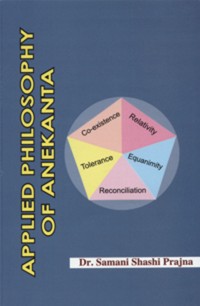All the founders of different religions are open-minded but their disciples bear prejudicial attitude towards each other. The sectarian outlook keep on fanning the flames of communal hatred. Today communalism operates in a significantly changed social and political milieu.[1] The disintegration of human race is also one of the basic problems humanity is facing today. Really, the "Human race is one"as propagated by Mahāvīra. It is we, who have erected the barriers of caste, creed, colour, language, nationalities and so forth and thus disintegrating the human race. Due to these man-made divisions, we all are standing in opposition to one another, instead of establishing harmony and mutual love. It is a well-known fact that countless wars have been fought on account of these man-made divisions. Not only this, we are claiming the superiority of our own caste, creed, culture, language, state over others. All over the world class-conflicts are becoming furious day-by-day, godharā kānda and recent violence against North Indians in Mumbai is the living example of it, disturbing the peace and harmony of human society in India.
Application of principles of anekānta will prevent recurrence of incidents like demolition of Babri Masjid, murders of three Gandhis (Mahatma, Indira and Rajiv), attacks on Aksaydham and Ragunath temples, massacre of Godhra,serial bomb blasts in different states of India and so forth. Practice of the teachings of anekānta will stop occurrence of the gigantic scandals and scams, which have plagued and defamed the entire Indian community. Terrorism, which is threatening the very survival of humanity, is a misplaced misconception of freedom and patriotism. To uproot this, we need guns of anekānta and not the ammunitions of destruction.
Jainism, from its inception accepts the oneness of the human race and oppose these man-made divisions of caste, creed etc. The incident of Chandanbālā as a slave and Mahāvīra received alms from her is the living example of equality during the period of Tīrthaṅkara Mahāvīra. He declared that ekka maṇussa jāī[2]i.e. human race is one and nobody is inferior or superior[3] by accepting the alms from the hands of sudra or slaves. All men are equal in their potentiality. No one is superior or inferior as such. It is not the class, colour, but the purification of self and good conduct that makes the difference.
Jain ācāryās hold that it is not the mutual conflict but mutual co-operation which can help us in this regard. As Jains have anekāntic perspective, they believe in the unity of mankind, but unity for them doesn't mean absolute unity. By unity they mean an organic whole in which every organ has its individual existence but work for a common goal i.e. human good. For them unity means unity in diversity. They maintain that every caste, religion, culture and language has full right to exist, with all its peculiarities but at the same time, it is one’s pious duty to work for the welfare of the humanity taken as a whole and be prepared to sacrifice one’s own interest in the larger interest of the humanity.
 Dr. Samani Shashi Pragya
Dr. Samani Shashi Pragya

